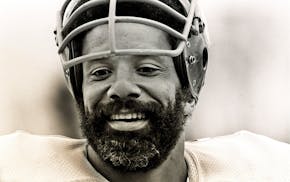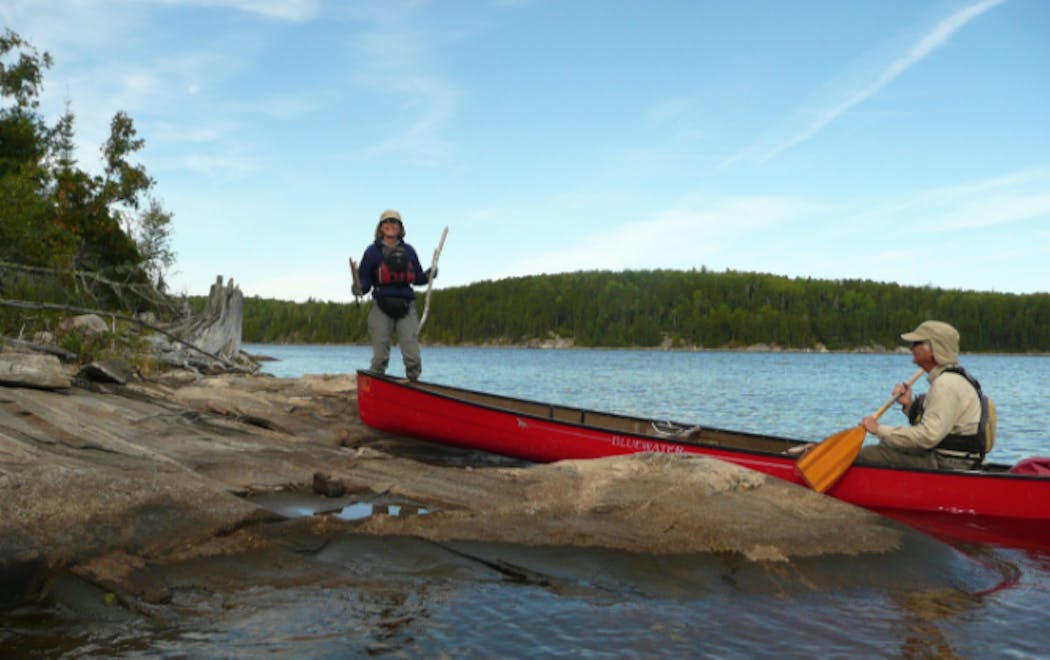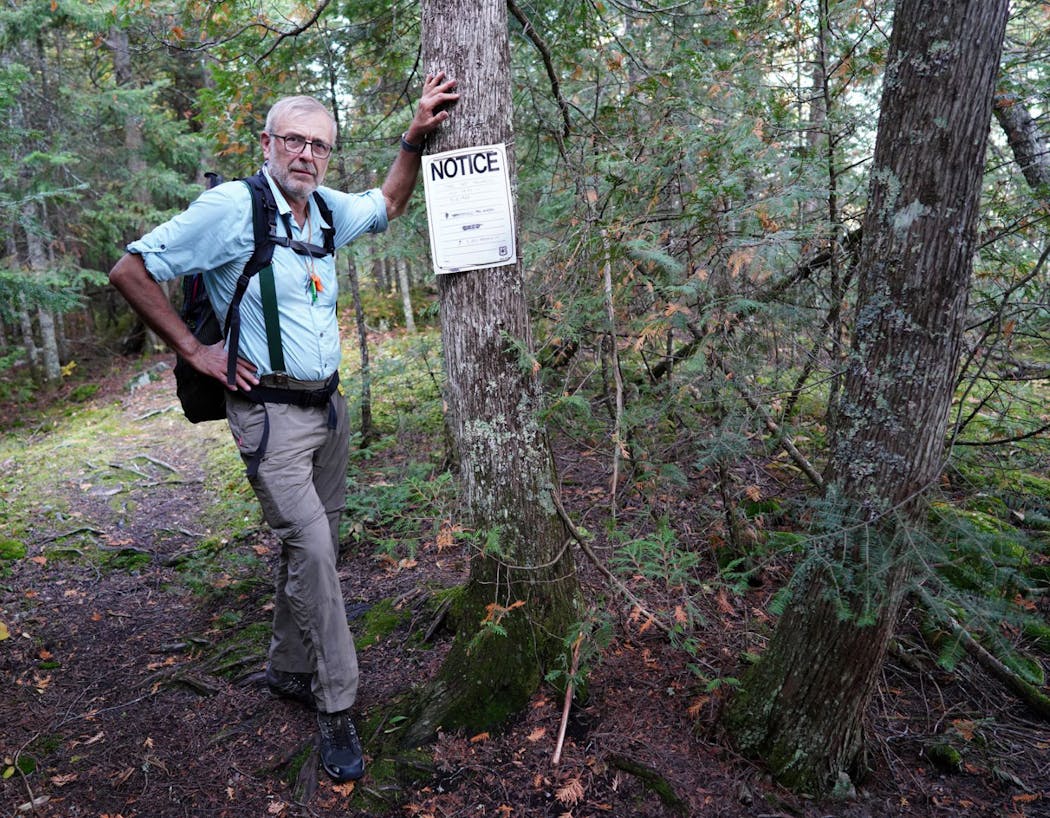Obstacles are plentiful in outdoor activities: long switchbacks, brutal portages, downed trees across the trail.
Those obstacles can be avoided. But one can't: the passage of time. It changes the dynamic with mainstays like backpacking, canoeing and mountain biking. Sometimes the gradual effects of age, of wear and tear on the body, of injuries or even disease become factors in an outdoors lifestyle.
And yet, a group of Minnesotans, middle-aged and older, queried about their activities had a common reaction to the impact of age. They make accommodations as they add years, but they are not taking to rocking chairs. (See more related comments here.)
Some national statistics show they're outliers by just moving their bodies.
A 2016 study by the Centers for Disease Control and Prevention found that more than one in four U.S. adults older than 50 are inactive — and that inactivity increased with age.
"I'm not going to stop," said Karen Neal, 73. She is a 47-year resident of Grand Marais and a veteran backpacker, hiker and canoeist. "If I stop, I die. That's how I see it."
Neal has had to make adjustments. "I certainly have slowed down," she said. "I had a torn meniscus in my knee when I was 71, and my doctor said it would never be the same. I was hoping he was wrong, but he wasn't."
That means shortening backpack trips and looking for ways to make trip chores easier. "I use a straw water filter now," Neal said. "Going down to the lake and squatting for a half-hour with a [pump] filter is harder to do when you're 70. I do it the easiest way possible now."
Neal, like many older people who keep active, has proved many times that she could take the rough conditions that are often part of a trip (she and friends didn't miss a trip to Boundary Waters Canoe Area Wilderness for 25 consecutive years), so now doesn't feel guilty enjoying a touch or two of luxury.
"Comfort is more important now," Neal said. "It gets harder to sleep and I get cold faster, so a warmer, thicker sleeping pad is a nice thing to have."
Neal also lightens up her pack, mostly by carrying fewer clothes and more basic foods.
"I'm less fussy and can wear the same clothes for seven days in a row," she said. "And while we used to eat wonderful gourmet meals — we didn't care how heavy the stuff was — freeze-dried meals are just fine. A few minutes and it's done. Anything tastes good out there."
For Neal, staying active doesn't mean just trips away from home. She also stays fit with daily walks in her neighborhood, even if she sometimes has to push herself to get out the door.
"Some mornings it's cold and there is no one going with me," she said. "I think 'ugh,' but then I say 'OK, let's go.' Five minutes into the walk, I am so happy I'm out there. I can't imagine what my day would be like without that."
• • •
Tom and Carol Burns of Duluth, both 74 and married 51 years, have been so dedicated to canoeing in Quetico Provincial Park in Ontario (Canada's Boundary Waters wilderness) that they moved from Atlanta to Duluth to be closer to their passion. But they've made some changes in the way they do those trips as they've aged.
"The secret is we work really hard staying in shape," Tom Burns said. That includes 2 miles of walking every day, working out with weights, and taking the stairs to their third-floor condo. "If you get out of shape, it's bloody hell getting back into shape," he said.
"Unlike when we were younger, we can't start a trip out of shape," Carol Burns added.
While the couple still take trips with lots of paddling and portaging, they don't do the 2-mile-long portages they once did, and their itineraries have been shaved from 14 or 15 days down to 12.
In addition, the Burnses pay more attention to the weight of their equipment — it's "lighter and better," Tom Burns said.
"We've thought about the inevitable, that there will be a time when we can't portage," he added. "There are places we can go where we don't have to move. But we're not really prepared for an abrupt end, where one of us can't go; we don't think about that. We have loved to do this; it's really been a shared passion, a centerpiece of our marriage. We've had a great time."
• • •
"When I see young people on a portage in the Boundary Waters, I dispense advice," said Martin Kubik, 67. "I tell them 'cherish your youth.' "
For years, Kubik has led efforts to build and maintain the hiking trails in the BWCA through his nonprofit, the Boundary Waters Advisory Committee. "I'm still fortunate I can lead [trail-clearing] trips with volunteers," he said. "But I leave the heavy work to the younger crew members."
In addition, Kubik said, he spends money every year reducing his pack weight, in big ways and small.
"I try to reduce the packaging I take with me, and can come back from a trip with just 9 ounces of garbage," he said. Kubik also has been sewing his own backpacks for 30 years; his latest, made from ultralight Cuben Fiber, weighs only 12 ounces, about a quarter the weight of a traditional framed pack.
Kubik always uses hiking poles when he's on a trip. "They're indispensable," he said. "They provide you with two points of contact, extra support, and take the weight off your knees."
Kubik, like the Burnses, also pays attention to staying in shape, a task he said is easier now that he has more free time as a retiree. In warm weather, Kubik hikes 90 minutes a day, five times a week — shouldering a 34-pound pack — and then switches to cross-country skiing in the winter.
• • •
Carolyn Caufman of Duluth has had both her hips replaced. Outdoor activities at her age, 72, can be "hard," she said, "but I still organize my life around how much I can be outside."
Caufman said trekking poles help her avoid knee pain. "Poles are a blessing when you're going uphill, and also for pulling myself up if I trip."
Caufman bought a new tent with side entry so it's easier for her to get in and out. "I still love being on the ground, once I can get my body down there!" she said. "I make sure I have some cushioning for the knees for the kneeling parts, such as dressing and packing up the equipment."
As a new college graduate, Caufman worked at a camp where she took women and girls on more than 30 trips to the BWCA.
"I can't do such trips anymore; my legs won't carry the loads," she says. "But I sure would go along with younger people who could do the heavy lifting."
Besides camping, Caufman hikes two hours a day, two or three times a week, on nature trails in Duluth. She also has taken up kayaking. "My back likes it better than canoeing."
• • •
Fang Yu said she has seen research that clearly shows the physical and cognitive benefits of remaining active into older age. But she also issued caution. Yu is a registered nurse, a professor, and chairwoman of the Adult and Gerontological Health Cooperative in the School of Nursing at the University of Minnesota.
"As we age, our cardiovascular system undergoes changes," she said. "If you're going to continue hiking, especially when altitude gain is involved, it's important to have at least an annual physical, an evaluation to make sure your heart and lungs are in good shape."
It's also important not to ignore or minimize warning signs. "Sometimes you think you can push through chest discomfort or heaviness, or you don't think much of it. Maybe you think you're just fatigued or did too much," Yu said. "But it's good to understand a little bit about the indicators of heart or lung problems, and be aware of potential symptoms of trouble so you know when to go in for a medical checkup."
Hiking especially can be hard on joints. That's why transitioning to less intense activities is not always a bad thing. "You don't always have to hike up a mountain," Yu said.
What's important is to continue to do something. "Unfortunately, many older adults are sedentary," Yu said. "They're missing out on general well-being and a better quality of life."
Jeff Moravec is a writer and photographer from Minneapolis. Reach him at jmoravec@mac.com.

The PWHL's growth comes with a price for a Minnesota Frost team building a potential dynasty.
What is the 'House settlement,' and what does it mean for the Gophers and NCAA?

Souhan: Anxiety and depression in the NFL helped inspire Lindsey Young's children's book

Reusse: Country boy Jim Marshall never lost his lust for life



